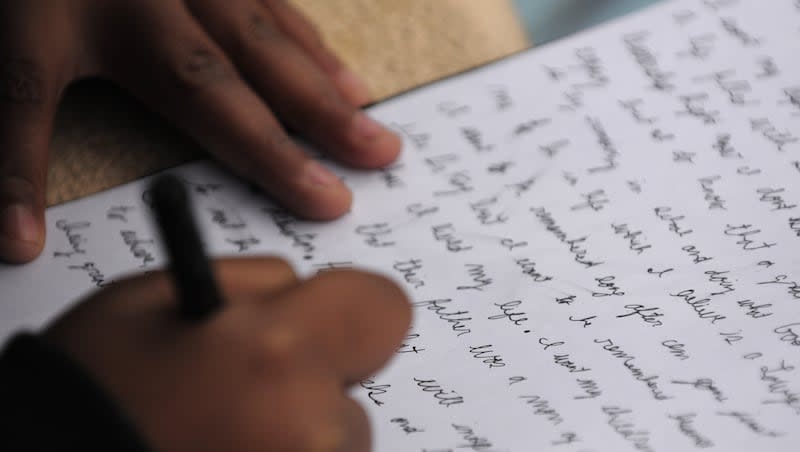Why writing by hand beats typing for enhancing memory, learning

At a time when schools are abandoning teaching cursive, and texting and typing overtake penning notes by significant margins, science suggests that writing things down by hand set them in memory better, enhancing learning. And especially for young kids, using fine motor skills to form letters helps learning, spelling accuracy and memory recall.
A new study in Frontiers in Psychology reinforces what other studies have found: Using pen and paper or, as Scientific American puts it, “even a stylus and tablet, is still the best way to learn.” In the study, researchers from Norway examined the brain activity in students as they took notes and found that writing by hand stimulated more electrical activity in the brain across regions that control movement, vision, sensory processing and memory.
“The ongoing substitution of handwriting by typewriting in almost every educational setting may seem somewhat misguided as it could affect the learning process in a negative way,” per the study.
“We show that when writing by hand, brain connectivity patterns are far more elaborate than when typewriting on a keyboard,” said Professor Audrey van der Meer, a brain researcher at the Norwegian University of Science and Technology and co-author of the study, in a news release. “Such widespread brain connectivity is known to be crucial for memory formation and for encoding new information and, therefore, is beneficial for learning.”
It’s the writing by hand, rather than whether it’s actually cursive, that’s believed to be beneficial, the researchers reported. Printing the letters also stimulates the brain, according to van der Meer and her colleague, F.R. van der Weel, also a psychology researcher at the university.
Study mechanics
Thirty-six university students were given electroencephalograms as they were “repeatedly prompted to either write or type a word that appeared on the screen.” By hand, they wrote in cursive using a digital pen on a touchscreen. Typing involved using a single finger to press the keys. The high-density EEGs measured the brain’s electrical activity using 256 sensors sewn in a net and placed over the head, the data recorded for five seconds with each prompt.
The words were chosen at random from the game Pictionary.
When they wrote by hand, the release said, connectivity in different brain regions increased, but that did not happen when they typed. “Our findings suggest that visual movement and information obtained through precisely controlled hand movements when using a pen contribute extensively to the brain’s connectivity patterns that promote learning,” van der Meer said.
She added that “the simple movement of hitting a key with the same finger repeatedly is less stimulating for the brain. “This also explains why children who have learned to write and read on a tablet can have difficulty differentiating between letters that are mirror images of each other, such as ‘b’ and ‘d.’ They literally haven’t felt with their bodies what it feels like to produce those letters,” van der Meer said.
The release noted that cursive writing has been making a comeback in some states this year, after it was dropped.
The researchers point out that technological advances are important, too, and one value should not be dropped entirely to focus on the other. “There is some evidence that students learn more and remember better when taking handwritten lecture notes, while using a computer with a keyboard may be more practical when writing a long text or essay,” van der Meer said.
Keep using that pen
NPR summarizes the benefits of putting pen to paper in this way: “In kids, studies show that tracing out ABCs, as opposed to typing them, leads to better and longer-lasting recognition and understanding of letters. Writing by hand also improves memory and recall of words, laying down the foundations of literacy and learning. In adults, taking notes by hand during a lecture, instead of typing, can lead to better conceptual understanding of material.”
“There’s actually some very important things going on during the embodied experience of writing by hand,” Ramesh Balasubramaniam, a neuroscientist at the University of California, Merced, told NPR. “It has important cognitive benefits.”
Writing by hand is usually a lot slower, but has some real benefits, van der Meer told NPR. If you’re good at typing, you can basically transcribe a conversation, but often you hear the words, rather than learn the information. Writing notes by hand is slower, but improves the processing. “You make the information your own,” she said, using key words and arrows, underlines and other ways to encode the idea so you have the concept.

